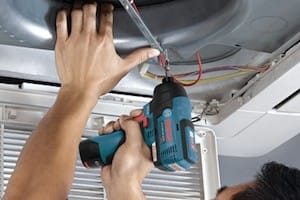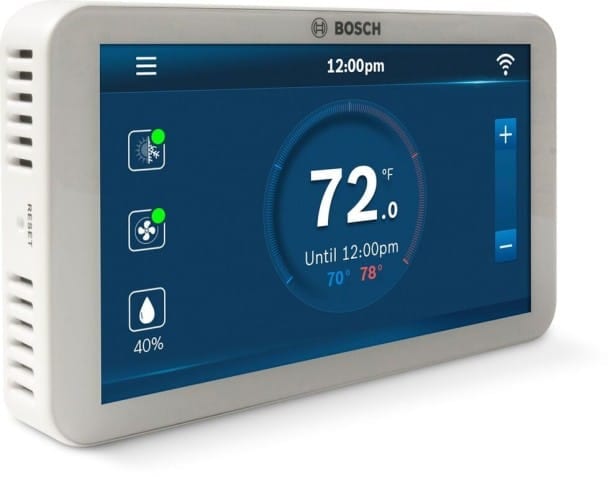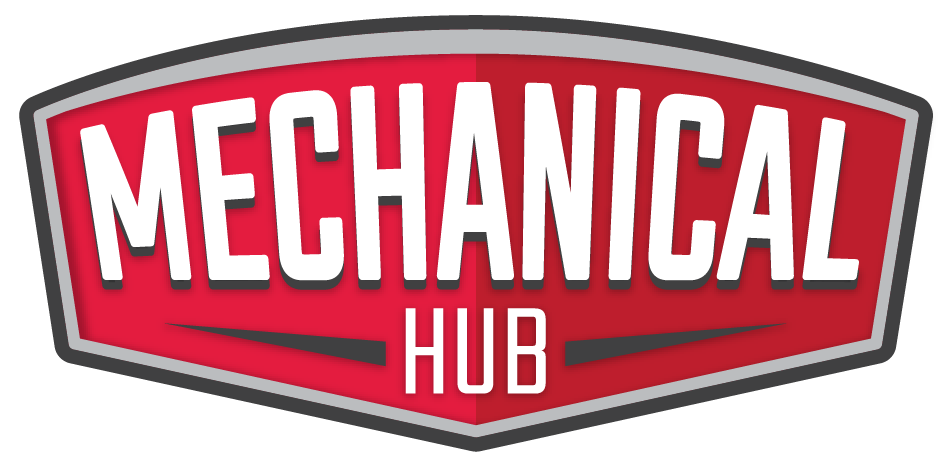Running a small business today is not an easy task, but if you enjoy what you do and have a passion for growing your company, you can make the endeavor easier by following these tips today. As the saying goes, work smarter, not harder, and never stop learning new ways to innovate in the business Read more
Whats New

Running a small business today is not an easy task, but if you enjoy what you do and have a passion for growing your company, you can make the endeavor easier by following these tips today. As the saying goes, work smarter, not harder, and never stop learning new ways to innovate in the business world.
Use the Right Tools To Do the Job Right
You can toil and labor every day to complete the jobs your company and its employees have set out to do by conducting business as usual. Sometimes, that works. At other times, it simply does not get the job done. Instead, focus your efforts more efficiently and effectively on utilizing the best tools for the job before you.
To further illustrate this point, consider this: does your company have a centralized database or protocols in place to document safety training, workplace development, or track incidents when they occur? If not, you should ask yourself why not? After all, this is busy work that must be done but tends to take an inordinate amount of your employee’s time and energy.
Try something new and innovative. Invest in Environmental Health and Safety, or EHS management software that takes most of the hard work off of your worker’s proverbial plates. The software allows you to store data and connect your workforce with shared and accessible information that is easily and seamlessly stored in the cloud. Make your work life easier by implementing the best practices of successful businesses when you use technology to your advantage.
Obtain Customer Feedback
Providing a great product and the best customer service around is all fine and well; but, if you do not know what your customer actually thinks about the product, service, or your company, you are at a disadvantage.
The actions you take to understand how the installation or service call went for the customer, whether the technicians were professional and timely or could have done better, and how the product is operating afterward are all valuable data points you can leverage to make your business even better.
Make a smart decision to reach out to every customer you work with and request feedback. Offer them an incentive to give their honest review. Whether you would like a review on social media or simply want to know how you did, present them with a free gift or a 10% off coupon they can use on their next service call once they provide their honest opinions and feedback regarding the experience. As they say, knowing is half the battle.
Watch this video to learn how to get customer feedback to help your business.
Why wait another minute? Take action today to help your business run smarter and reach your potential time and again. By using the best tools for the job and paying close attention to customer feedback, you can implement proactive and positive changes going forward. You will make your employees’ lives easier and make your customers happier. What’s better than that?

If you want to get ahead in the construction business, then you need people to trust you; you need people to have confidence in your ability to get the job done, but more than that, to get it done on time at a fair price. Here’s how you can do that: Quality Materials are The Read more
If you want to get ahead in the construction business, then you need people to trust you; you need people to have confidence in your ability to get the job done, but more than that, to get it done on time at a fair price. Here’s how you can do that:
- Quality Materials are The Foundation of Trust
Let’s start with your materials, which are literally the building blocks of your business. If you’re building with sticks when the blueprint says steel, we’ve got a problem. Source your materials from trusted suppliers like these SS Pipe suppliers —your reputation can depend on the strength of the materials you use. It’s like cooking; your final dish is only as good as the ingredients. So, unless you want your projects to be as dependable as a chocolate teapot, invest in quality from the get-go.
- Transparency
If there’s one thing that will give your clients confidence in your abilities to carry out their work for them, then it is transparency. If you are totally honest about what you are doing, how much it is costing, and how the project is going to be managed and put into action, and if you are always honest and upfront with them when anything goes wrong they will trust you. When they trust you, they will recommend you to others, and your business will grow.

- Skilled Workforce
Your team is your best asset—treat them like the gold nails in a platinum project. Ensure they are skilled, certified, and as reliable as a well-worn hammer. Regular training sessions are not just a bonus; they’re a necessity. A skilled workforce not only builds better; they build confidence in your clients through their professionalism and prowess.
- Rock-Solid Guarantees
Warranties and guarantees aren’t just paperwork; they’re peace of mind. Offer guarantees that show you stand behind your work. This doesn’t just show that you believe in your work’s quality; it also puts your client’s fears to rest. It’s like saying, “We’re so confident in our work that we’ve put a safety net under our tightrope.”
- Stellar Customer Service
Great customer service is the cherry on top of your professional sundae. It’s not just about answering calls and emails promptly (though please do that); it’s about making every client feel like they’re your only client. From the initial handshake to the final inspection, make their experience as smooth as a freshly paved road.
- Show Off Your Success
If you’ve built it and it’s awesome, flaunt it. Keep an updated portfolio of your projects, complete with before and after photos, testimonials, and details of the challenges overcome. This isn’t just bragging; it’s visual proof of your capabilities. Think of it as your construction company’s highlight reel.
- Build Bridges, Not Just Buildings
Last but not least, get involved in your local community. Sponsor a little league team, participate in local events, or help out with community projects. When people see you giving back, they see a company that cares—not just about profits, but about people.
Building confidence in your construction company is a lot like building a house. Start with a solid foundation of quality materials, add walls of transparency and skilled craftsmanship, and top it off with the roof of stellar customer service!

Corrosive environments present a formidable challenge in the mechanical manufacturing industry. Whether it’s exposure to saltwater in marine applications, chemicals in processing plants, or high humidity in various industrial settings, corrosion can significantly impact the longevity and performance of mechanical components. Utilizing high-performance solvents can help combat these issues effectively. Understanding the appropriate materials and chemical Read more
Corrosive environments present a formidable challenge in the mechanical manufacturing industry. Whether it’s exposure to saltwater in marine applications, chemicals in processing plants, or high humidity in various industrial settings, corrosion can significantly impact the longevity and performance of mechanical components. Utilizing high-performance solvents can help combat these issues effectively. Understanding the appropriate materials and chemical solutions to mitigate these effects is crucial for maintaining operational efficiency and reducing maintenance costs, ultimately leading to more reliable and durable machinery.
Understanding Corrosive Environments
Corrosion occurs when materials deteriorate due to chemical reactions to their environment. This is particularly problematic in mechanical manufacturing, where metal components are commonplace. The most common types of corrosion include:
- Uniform Corrosion: Occurs evenly across a material’s surface.
- Galvanic Corrosion: Occurs when two different metals are in electrical contact in a corrosive environment.
- Pitting Corrosion: Results in small, localized cavities or pits on the surface.
- Crevice Corrosion: Occurs in confined spaces where stagnant solutions are present.
- Stress Corrosion Cracking (SCC): Caused by the combined effect of tensile stress and a corrosive environment.
Each type of corrosion necessitates specific preventive measures and the selection of suitable materials.
Essential Alloys for Corrosive Environments
One of the most effective ways to combat corrosion is using corrosion-resistant alloys. These materials are designed to withstand harsh environments and maintain structural integrity over time. Key alloys include:
Stainless Steel
Stainless steel is renowned for its corrosion resistance, attributed to its chromium content, which forms a passive oxide layer on the surface. Various grades are available, each with distinct properties:
- 304 Stainless Steel: Offers excellent corrosion resistance and is widely used in industrial applications.
- 316 Stainless Steel: Contains molybdenum, which enhances its resistance to pitting and crevice corrosion, making it suitable for marine environments.
- Duplex Stainless Steel: Combines the properties of austenitic and ferritic stainless steels, providing high strength and improved resistance to stress corrosion cracking.
Nickel Alloys
Nickel alloys are highly resistant to various types of corrosion, including pitting, crevice corrosion, and SCC. Common nickel alloys include:
- Inconel 625: Known for its high strength and excellent corrosion resistance in acidic and alkaline environments.
- Monel 400: Offers good resistance to corrosion in seawater and brackish water.
- Hastelloy C-276: Provides outstanding resistance to various aggressive chemicals, including sulfuric acid and chlorine compounds.
Titanium Alloys
Titanium alloys are lightweight yet exceptionally strong and corrosion-resistant. They are particularly suitable for aerospace and marine applications:
- Grade 2 Titanium: Known for its excellent corrosion resistance in oxidizing and mildly reducing environments.
- Grade 5 Titanium (Ti-6Al-4V): Combines high strength with excellent corrosion resistance, making it ideal for high-performance applications.
Chemical Solutions for Corrosion Prevention
In addition to selecting the right materials, chemical solutions prevent corrosion. High-performance solvents can be applied as coatings, inhibitors, or treatments to protect metal surfaces, ensuring longevity and durability. These solutions not only safeguard your investments but also enhance the overall performance of your projects.
Corrosion Inhibitors
Corrosion inhibitors are chemical compounds that decrease the corrosion rate when added to the environment. They form a protective film on the metal surface or neutralize corrosive agents. Common types include:
- Anodic Inhibitors: Promote the formation of a passive oxide layer on the metal surface.
- Cathodic Inhibitors: Reduce the corrosion rate by decreasing the cathodic reaction.
- Mixed Inhibitors: Combine the properties of anodic and cathodic inhibitors for comprehensive protection.
Protective Coatings
Protective coatings are applied to metal surfaces to create a barrier between the material and the corrosive environment. Types of protective coatings include:
- Paints and Varnishes: Provide a physical barrier that prevents moisture and chemicals from reaching the metal surface.
- Epoxy Coatings: Offer excellent adhesion and durability, making them suitable for harsh industrial environments.
- Galvanization: Involves coating the metal with a layer of zinc, which provides sacrificial protection by corroding preferentially to the underlying metal.
Passivation
Passivation is a chemical treatment process that enhances the natural oxide layer on the surface of stainless steel and other alloys. This protective layer reduces the material’s reactivity and improves its corrosion resistance. Passivation can achieve even better results by effectively using solvents during this process. It is commonly used in industries where cleanliness and corrosion resistance are critical, such as pharmaceuticals and food processing.
Conclusion
Navigating corrosive environments in mechanical manufacturing requires a strategic approach that combines corrosion-resistant materials and effective chemical solutions. By selecting the appropriate alloys and applying the right protective measures, manufacturers can significantly extend the lifespan of their components and ensure reliable performance in even the harshest conditions. For those seeking expert guidance and customized solutions, consulting with industry professionals can further optimize corrosion prevention strategies, ensuring long-term success and operational efficiency.

When you run a manufacturing plant safety is one of the biggest concerns you should have for your employees. A safe working environment not only protects the health and well-being of your employees but it’s going to skyrocket their productivity as well. Manufacturing facilities often use heavy machinery and hazardous materials making them prone to Read more
When you run a manufacturing plant safety is one of the biggest concerns you should have for your employees. A safe working environment not only protects the health and well-being of your employees but it’s going to skyrocket their productivity as well. Manufacturing facilities often use heavy machinery and hazardous materials making them prone to various risks.
The only way to go around this and to ensure the safety of your employees is to put safety measures in place. Here are some things you need to do to keep the environment safe.

Conduct Regular Safety Training
One of the most effective ways to keep a manufacturing plant safe is regular training sessions for all the employees. They should be educated about the specific risk associated with the job that they are doing.
You should also train them on how to use equipment properly on a regular basis. If you get new equipment then you should never let them use it without thoroughly going over all the features and the safety precautions that they need to take.
Make sure that you are giving proper personal protective equipment at all times. Even when employees are well seasoned they need refresher courses to ensure that they keep their safety knowledge up to date.
Use Personal Protective Equipment
You need to make sure your employees receive personal protective equipment (PPE). This is very vital. These are going to protect your employees from all the potential hazards that they may encounter.
Depending on the nature of the job that they are doing they need safety glasses, gloves as well as earplugs. As an employer you’re supposed to provide these for your employees.
Make sure you do regular inspections and maintenance of the PPE because this is vital to ensuring that they remain in the best condition possible.
Install Proper Railings
Industrial handrails are vital for the safety of your manufacturing plant. This is especially important in areas where you have elevated walking platforms or stairways. These industrial handrails provide support and stability and help to prevent falls.
They ensure that a safe movement can be done throughout the facility. When you install these in key areas of your manufacturing plant you are going to reduce the risk of accidents which can leave you liable and open you to a potential hemorrhaging of your funds for your business.
Perform Regular Equipment Maintenance
Equipment maintenance is something that you can’t afford to skimp on. It is essential to ensuring that everything is operating safely and efficiently at all times.
When you have faulty equipment it is open season for injuries and accidents as well as production downtime. This is the last thing you want. This is why you need to make sure that you are putting in place a preventative program that helps to ward off potential issues before they become big problems.

In today’s world, energy efficiency is more important than ever. Not only does improving your home’s energy efficiency help reduce utility bills, but it also contributes to a more sustainable environment. Small changes and regular maintenance can significantly lower energy consumption, making your home more comfortable and cost-effective to run. One of the best ways Read more
In today’s world, energy efficiency is more important than ever. Not only does improving your home’s energy efficiency help reduce utility bills, but it also contributes to a more sustainable environment. Small changes and regular maintenance can significantly lower energy consumption, making your home more comfortable and cost-effective to run.
One of the best ways to achieve these energy-saving goals is by leveraging the expertise of professional handyman services. A skilled handyman can help identify areas where your home may be losing energy and implement simple, effective upgrades that make a big difference. Whether it’s sealing drafts, optimizing your HVAC system, or improving insulation, these improvements can have a substantial impact on your home’s overall efficiency.
In this article, we’ll explore some practical steps you can take to enhance your home’s energy efficiency with the help of a professional handyman. From detecting and sealing energy leaks to making smart upgrades, we’ll cover everything you need to know to make your home more energy-efficient and environmentally friendly. If you’re ready to start saving energy and lowering your utility bills, read on to discover how a handyman can help you achieve your goals.

Section 1: Identifying Energy Leaks in Your Home
Energy leaks are one of the most common reasons for high utility bills and reduced energy efficiency in homes. These leaks allow warm air to escape during the winter and cool air to escape during the summer, forcing your HVAC system to work harder to maintain a comfortable temperature. Identifying and sealing these leaks is a crucial first step in improving your home’s energy efficiency.
Subsection 1.1: Common Areas Where Energy Loss Occurs
Energy leaks can occur in various parts of your home, often in places you might not immediately think of. Some of the most common areas where energy loss occurs include:
- Windows and Doors: Gaps around windows and doors are major culprits of energy loss. Over time, weatherstripping can wear down, and caulking can crack, allowing drafts to enter your home.
- Ductwork: Leaky ductwork can cause significant energy loss as conditioned air escapes before it reaches its intended destination. Poorly sealed ducts can reduce your HVAC system’s efficiency by up to 20%.
- Attics and Basements: These areas are often under-insulated, leading to significant heat loss in the winter and heat gain in the summer. Cracks and gaps in the foundation and walls can also contribute to energy inefficiency.
- Electrical Outlets and Switches: These often-overlooked areas can be sources of drafts, especially in older homes. Adding insulation behind outlet and switch plates can help reduce energy loss.
Subsection 1.2: How a Professional Can Help Detect and Seal Energy Leaks
A professional handyman can play a vital role in identifying and addressing these energy leaks. Here’s how they can help:
- Thorough Inspection: A handyman can conduct a comprehensive inspection of your home to identify areas where energy is being lost. They can check windows, doors, ductwork, and other potential problem areas using specialized tools to detect drafts and leaks.
- Sealing Gaps and Cracks: Once energy leaks are identified, a handyman can apply caulking and weatherstripping to seal gaps around windows and doors. They can also seal leaks in ductwork with mastic or metal tape, ensuring your HVAC system operates more efficiently.
- Insulating Problem Areas: If your attic, basement, or walls are under-insulated, a handyman can add insulation where needed, helping to reduce heat loss in the winter and heat gain in the summer.
- Upgrading Outlets and Switches: A handyman can install foam gaskets behind electrical outlets and switch plates to minimize drafts and improve overall energy efficiency.
By addressing these common areas of energy loss, you can significantly reduce your home’s energy consumption and improve comfort year-round.
Section 2: Enhancing HVAC Efficiency with Professional Services
Your HVAC system plays a crucial role in maintaining a comfortable indoor environment, but it can also be one of the biggest energy consumers in your home. By ensuring your HVAC system is operating efficiently, you can significantly reduce energy costs and extend the life of your equipment. A professional handyman can help optimize your HVAC system through regular maintenance and simple adjustments that make a big difference.
Subsection 2.1: Routine HVAC Maintenance Tasks
Routine maintenance is essential for keeping your HVAC system running efficiently. Here are some key tasks that a handyman can handle to ensure your system is performing at its best:
- Changing Air Filters: One of the simplest yet most effective ways to improve HVAC efficiency is by regularly changing air filters. Dirty filters restrict airflow, forcing your system to work harder and use more energy. A handyman can replace filters as part of a regular maintenance schedule, helping to keep your system running smoothly.
- Cleaning Vents and Ducts: Dust and debris can accumulate in your home’s vents and ductwork over time, reducing airflow and efficiency. A handyman can clean these areas, ensuring that air can move freely throughout your home. Clean ducts also improve indoor air quality by reducing the circulation of dust and allergens.
- Checking for Blockages: Blockages in the airflow, such as obstructed vents or blocked return air registers, can cause your HVAC system to overwork. A handyman can inspect your home for any blockages and clear them, ensuring optimal airflow and reducing strain on your system.

Subsection 2.2: Optimizing Thermostat Settings
Thermostat settings have a significant impact on your home’s energy consumption. By making a few adjustments, you can reduce your energy usage without sacrificing comfort. A handyman can assist with the following:
- Installing Programmable Thermostats: Programmable thermostats allow you to set your HVAC system to automatically adjust the temperature based on your schedule. This ensures that your system isn’t working hard to heat or cool your home when it’s not needed, such as when you’re at work or asleep. A handyman can install and set up these thermostats for you, optimizing your energy use.
- Calibrating Existing Thermostats: If your current thermostat isn’t accurately reading the temperature, it could be causing your HVAC system to run longer than necessary. A handyman can calibrate your thermostat to ensure it’s giving accurate readings, helping your system run more efficiently.
- Zoning Systems: For larger homes, zoning systems allow different areas of the home to be heated or cooled independently. A handyman can assist with setting up or adjusting these systems, ensuring that you’re only using energy where and when it’s needed.
By focusing on these routine maintenance tasks and optimizing your thermostat settings, you can ensure that your HVAC system runs efficiently, saving you money on energy bills while keeping your home comfortable.
Section 3: Improving Insulation and Reducing Heat Loss
Proper insulation is key to maintaining energy efficiency in your home. Without adequate insulation, your home loses heat in the winter and gains heat in the summer, causing your HVAC system to work harder than necessary. By improving insulation, you can significantly reduce energy consumption and create a more comfortable living environment. A professional handyman can assess your home’s insulation and make necessary improvements to enhance its efficiency.
Subsection 3.1: The Role of Proper Insulation
Insulation acts as a barrier that keeps warm air inside during the winter and cool air inside during the summer. If your home is under-insulated, you’re likely losing a significant amount of energy, which translates to higher utility bills. Common areas that may require insulation upgrades include:
- Attics: Heat rises, making the attic one of the primary areas where energy loss occurs. A well-insulated attic can prevent heat from escaping in the winter and keep your home cooler in the summer.
- Walls: Insulating exterior walls helps maintain a consistent indoor temperature and reduces the workload on your HVAC system. This is particularly important for older homes that may have inadequate or no insulation in the walls.
- Basements and Crawl Spaces: Uninsulated basements and crawl spaces can be major sources of heat loss. Insulating these areas can help prevent cold floors and reduce overall energy consumption.
- Windows and Doors: While not technically insulation, sealing gaps around windows and doors with weatherstripping or caulk is crucial to preventing drafts and energy loss.
Subsection 3.2: Pipe Insulation and Water Heater Efficiency
In addition to insulating your home’s structure, insulating your pipes can also contribute to energy savings. Here’s how a handyman can help:
- Pipe Insulation: Insulating hot water pipes reduces heat loss, meaning your water heater doesn’t have to work as hard to deliver hot water. This is especially beneficial in unheated areas of your home, such as basements and crawl spaces. A handyman can install foam pipe insulation to minimize heat loss and improve efficiency.
- Water Heater Maintenance: Ensuring your water heater operates efficiently can lead to significant energy savings. A handyman can adjust the temperature settings, insulate the water heater, and check for leaks to ensure it’s functioning at peak efficiency. Installing a water heater blanket can also reduce energy loss, especially for older units.
By improving insulation in key areas of your home and insulating your pipes, you can significantly reduce energy consumption, lower your utility bills, and create a more comfortable living environment.
Section 4: Simple Upgrades to Boost Energy Efficiency
In addition to improving insulation and optimizing your HVAC system, there are several simple upgrades that can significantly boost your home’s energy efficiency. These upgrades are relatively easy to implement and can result in noticeable savings on your utility bills. A professional handyman can help you with these tasks, ensuring they are done correctly and efficiently.
Subsection 4.1: Energy-Efficient Lighting Solutions
Lighting accounts for a significant portion of a home’s energy use, especially if you’re still using traditional incandescent bulbs. Upgrading to energy-efficient lighting is one of the simplest ways to reduce energy consumption:
- Switching to LED Bulbs: LED bulbs use up to 75% less energy than incandescent bulbs and last much longer. A handyman can help you replace all the outdated bulbs in your home with LEDs, which not only reduces energy use but also lowers maintenance costs since these bulbs need to be replaced less frequently.
- Installing Dimmers and Motion Sensors: Installing dimmer switches and motion sensors can further enhance energy savings by allowing you to control the amount of light used and ensuring lights are only on when needed. A handyman can easily install these devices throughout your home, providing both energy savings and added convenience.
Subsection 4.2: Installing Draft Stoppers and Window Film
Drafts from windows and doors can lead to significant heat loss in the winter and heat gain in the summer, making your HVAC system work harder than necessary. Here are some simple solutions to address these issues:
- Draft Stoppers for Doors: Draft stoppers are an easy and inexpensive way to prevent air leaks under doors. A handyman can install draft stoppers on all exterior doors, helping to keep conditioned air inside your home.
- Window Insulating Film: Applying window insulating film can reduce heat loss through windows during the winter and block heat gain during the summer. This film is particularly effective for older windows that may not be as energy-efficient as modern ones. A handyman can expertly apply this film to ensure a smooth, bubble-free finish.
- Weatherstripping: Adding or replacing weatherstripping around windows and doors is another effective way to seal out drafts. A handyman can install weatherstripping to create a tight seal, reducing energy loss and improving comfort.
By implementing these simple upgrades, you can make your home more energy-efficient and reduce your overall energy costs. These small changes add up, providing you with a more comfortable living environment and long-term savings on your utility bills.
Conclusion
Improving your home’s energy efficiency is not only beneficial for reducing utility costs but also for creating a more comfortable and sustainable living environment. From sealing energy leaks and optimizing your HVAC system to enhancing insulation and making simple upgrades, there are numerous ways to boost your home’s efficiency with the help of a professional handyman.
By addressing these critical areas, you can significantly lower your energy consumption, reduce your carbon footprint, and enjoy the added benefits of increased comfort and long-term savings. A skilled handyman can ensure that these improvements are implemented correctly and efficiently, maximizing the impact on your home’s energy performance.
Whether you’re looking to make small changes or undertake more significant improvements, Elite Cleveland Handyman is here to help. Their team of experienced professionals can assist with everything from routine maintenance to major energy-saving upgrades, ensuring your home remains efficient and comfortable year-round.
To learn more about how Elite Cleveland Handyman can assist with your energy efficiency projects, visit Elite Cleveland Handyman. If you’re ready to take the next step, you can request a personalized quote today at Request a Quote. Let the experts at Elite Cleveland Handyman help you transform your home into an energy-efficient haven.
